 | |||
|
| Home > Public Information > ING Annual Reports > 2002-2003 > Chapter 4. In-House Research |
 | |||
|
| Home > Public Information > ING Annual Reports > 2002-2003 > Chapter 4. In-House Research |
Other available formats: PDF
Chapter 4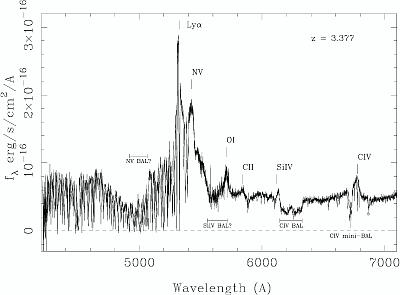
|
| Figure 1. ISIS spectrum of an unusual broad-absorption-line
(BAL) quasar discovered during a search for high-redshift quasars (Benn et
al.). The broad trough centred at 6230Å is due to CIV absorption by
gas streaming out from the quasar at between 21,000 and 29,000 kms-1
(i.e.~0.1c). The physics of the acceleration and confinement of the gas in
BAL outflows is unknown. The unusual feature of this quasar is the CIV absorption
near 6700Å. This shows velocity structure on a scale smaller than the
CIV doublet separation (11Å at this redshift), allowing one to solve
for both the fraction of the nuclear source covered by the gas (~0.5 in this
case), and the true optical depth of the absorption, allowing estimation
of column densities. [ JPEG | TIFF
] |
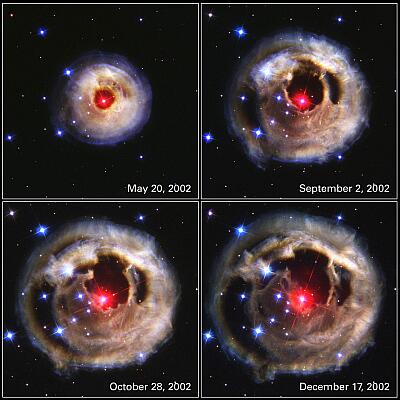
|
| Figure 2. Images obtained by Hubble Space Telescope
of erupting star V838 Monocerotis on 20 May, 2 September, 28 October and
17 December, 2002. [ JPEG | TIFF ] |
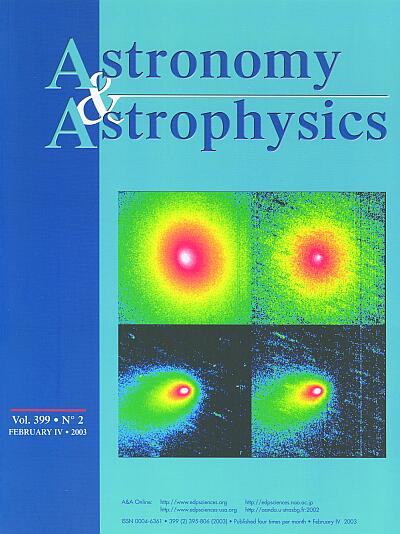
|
| Figure 3. Front cover of Astronomy and Astrophysics,
Vol. 399, No. 2, February 2003. [ JPEG | TIFF ] |
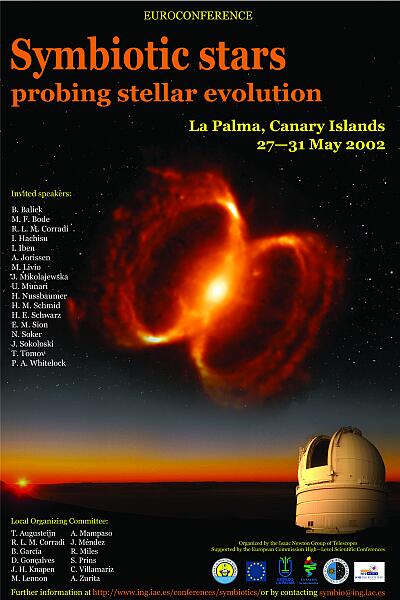
|
| Figure 4. Poster of the Euroconference “Symbiotic
Stars Probing Stellar Evolution”. [ JPEG | TIFF ] |
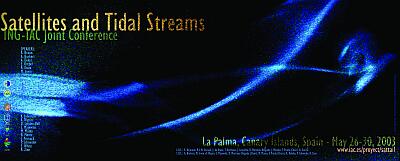
|
| Figure 5. Poster of the ING-IAC joint conference
“Satellites and Tidal Streams”. [ JPEG | TIFF ] |